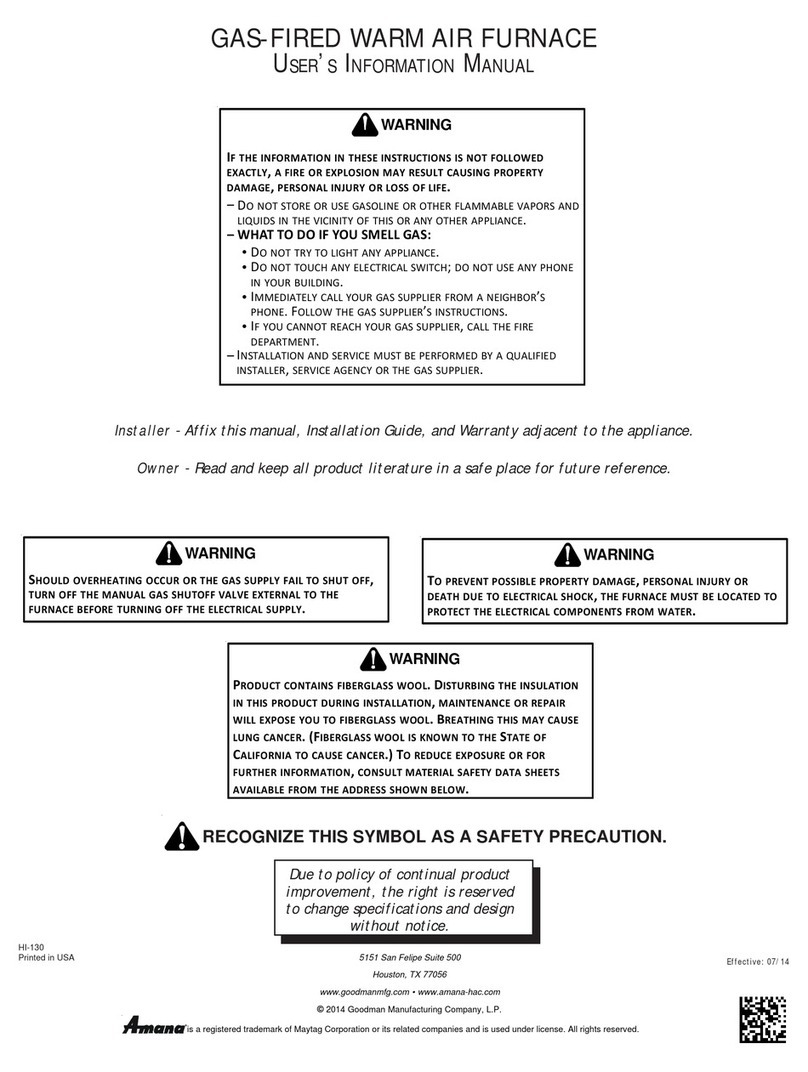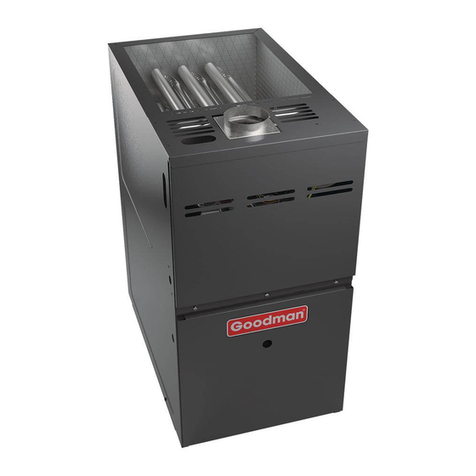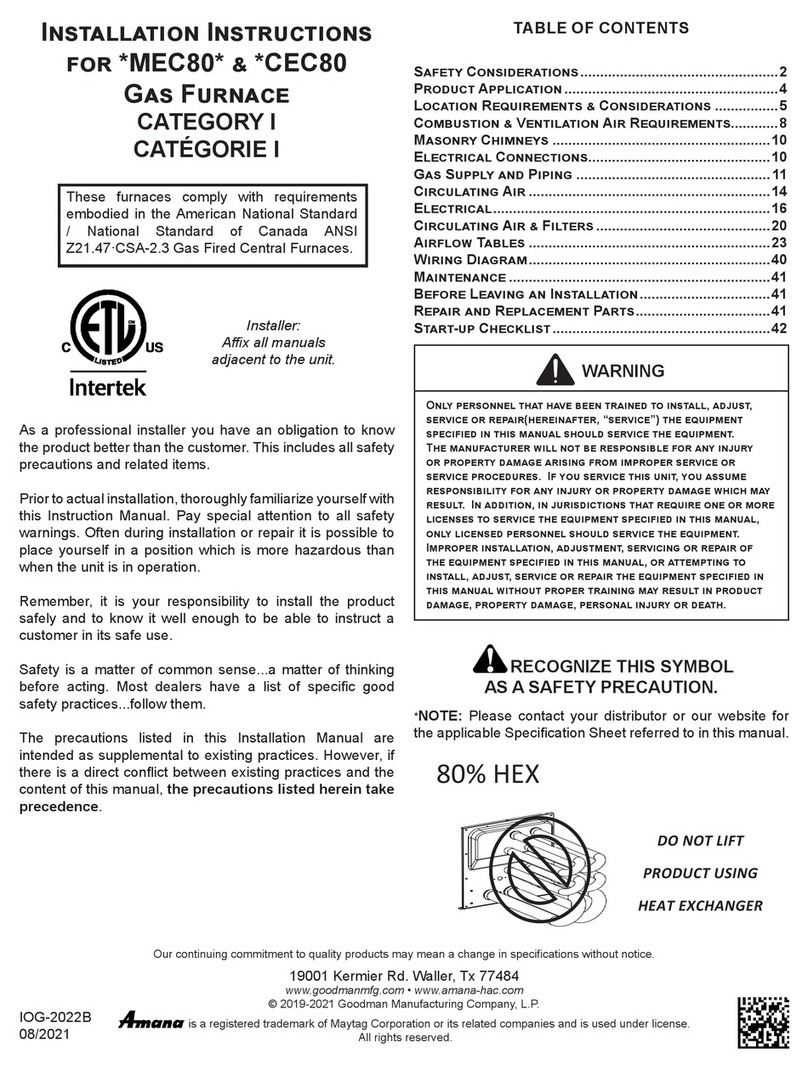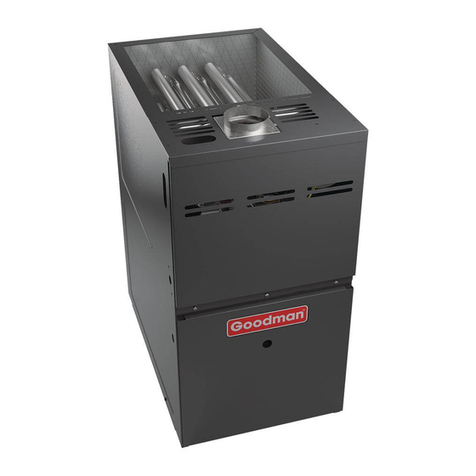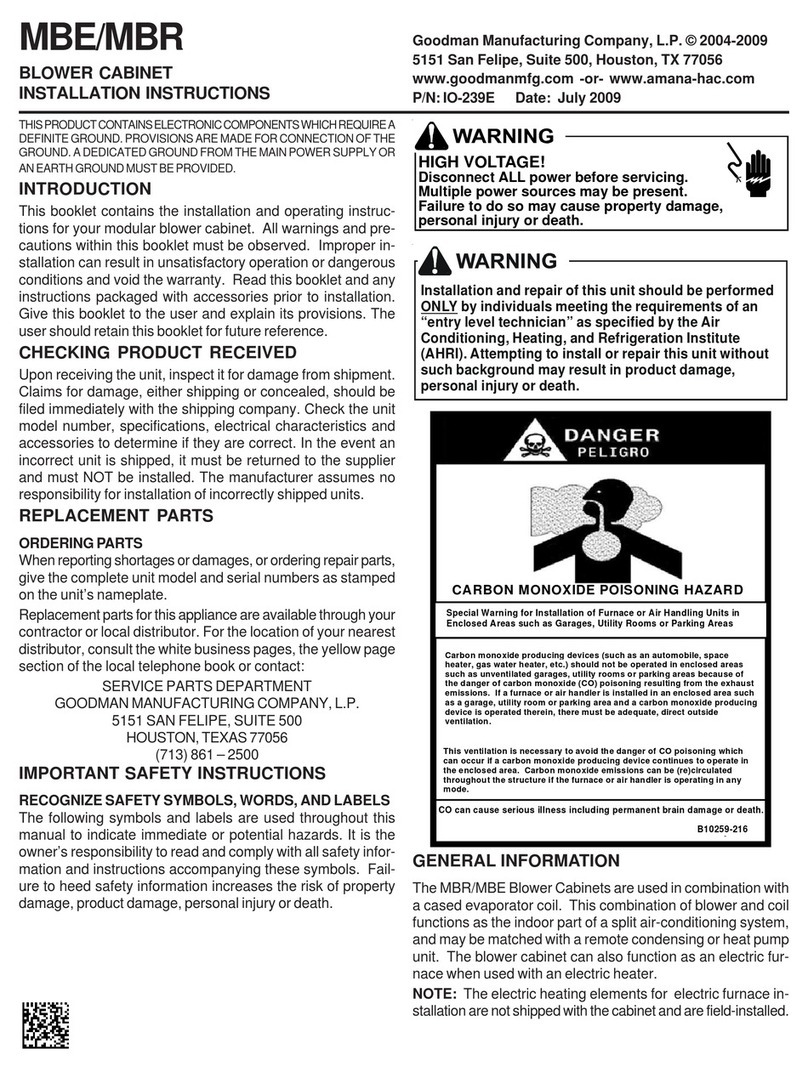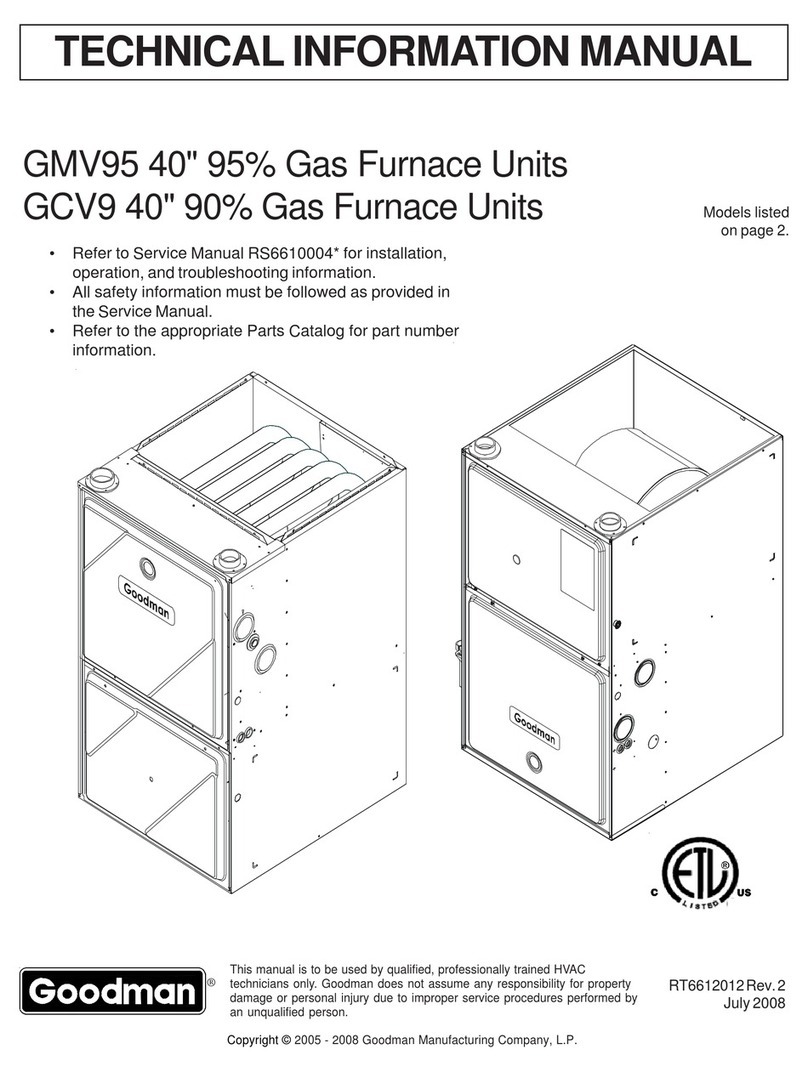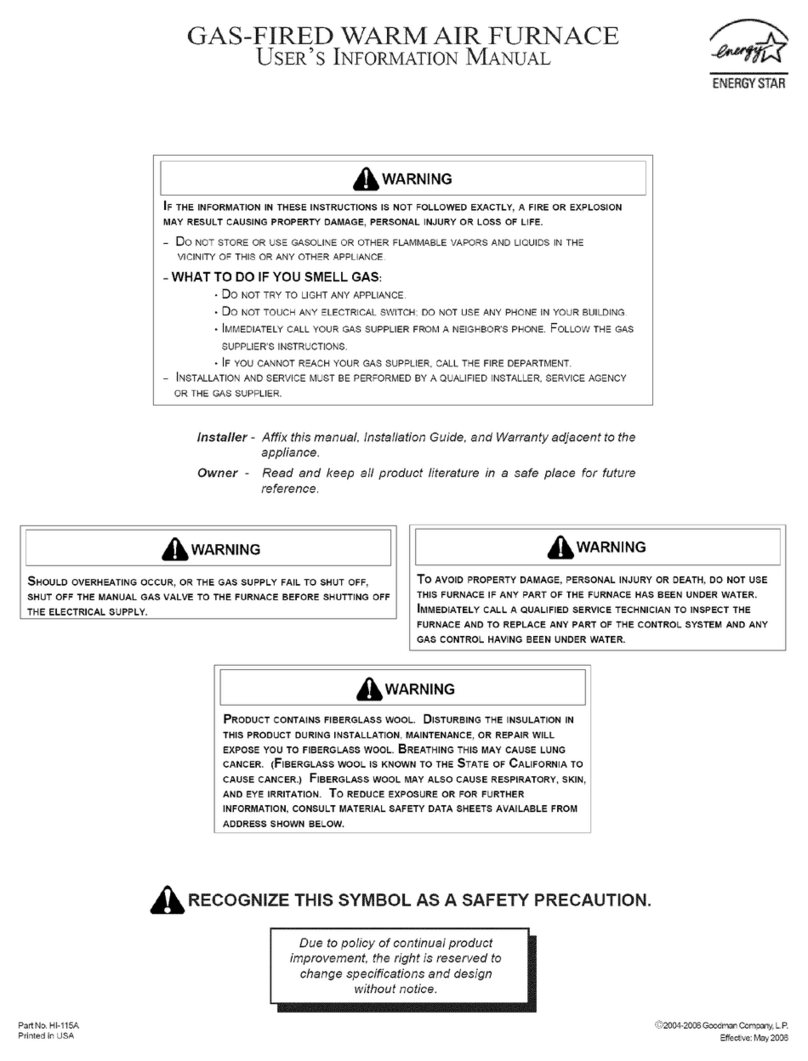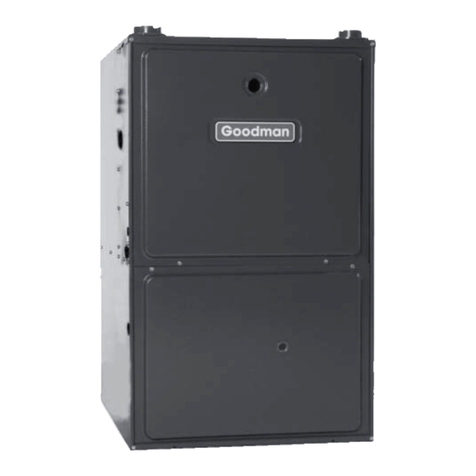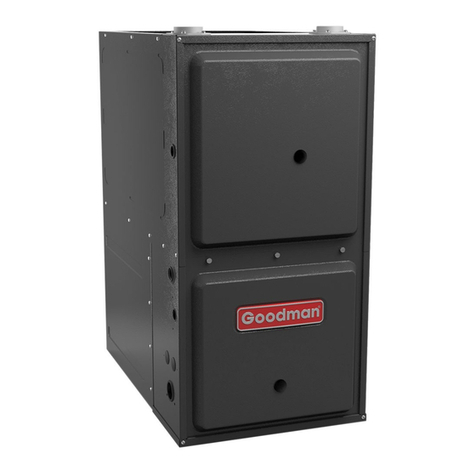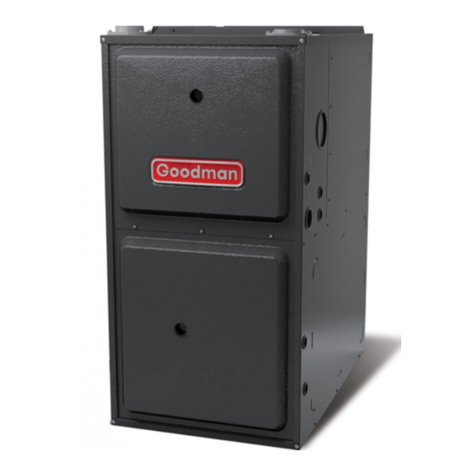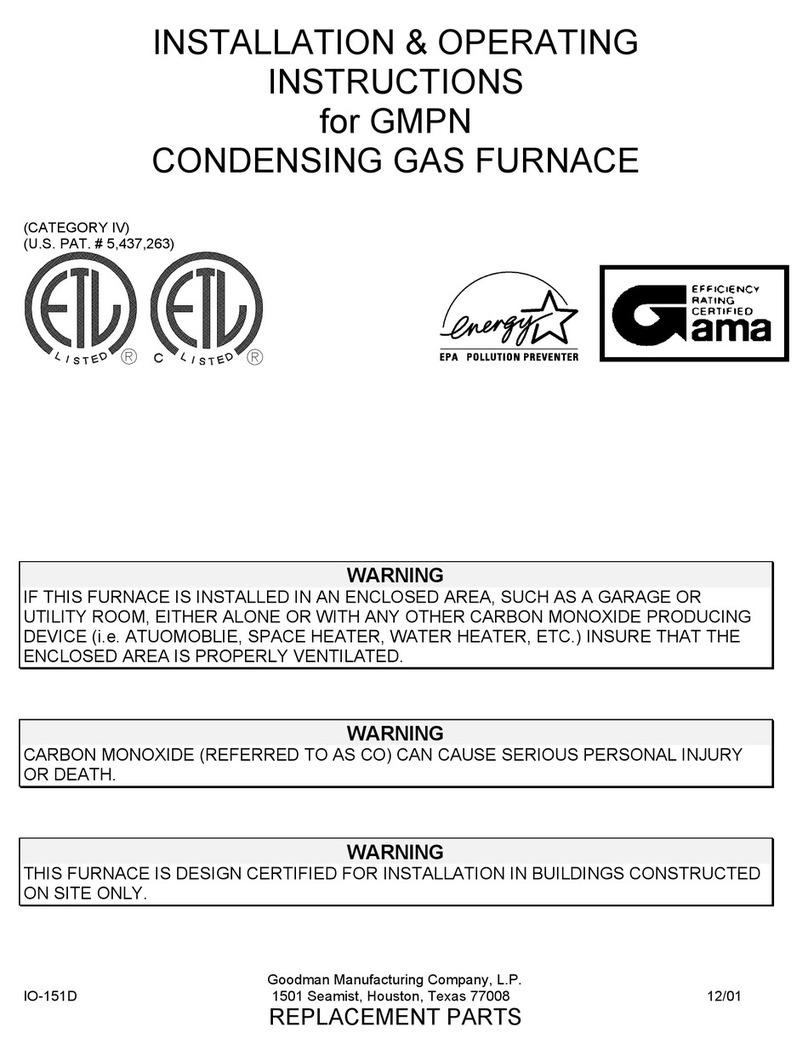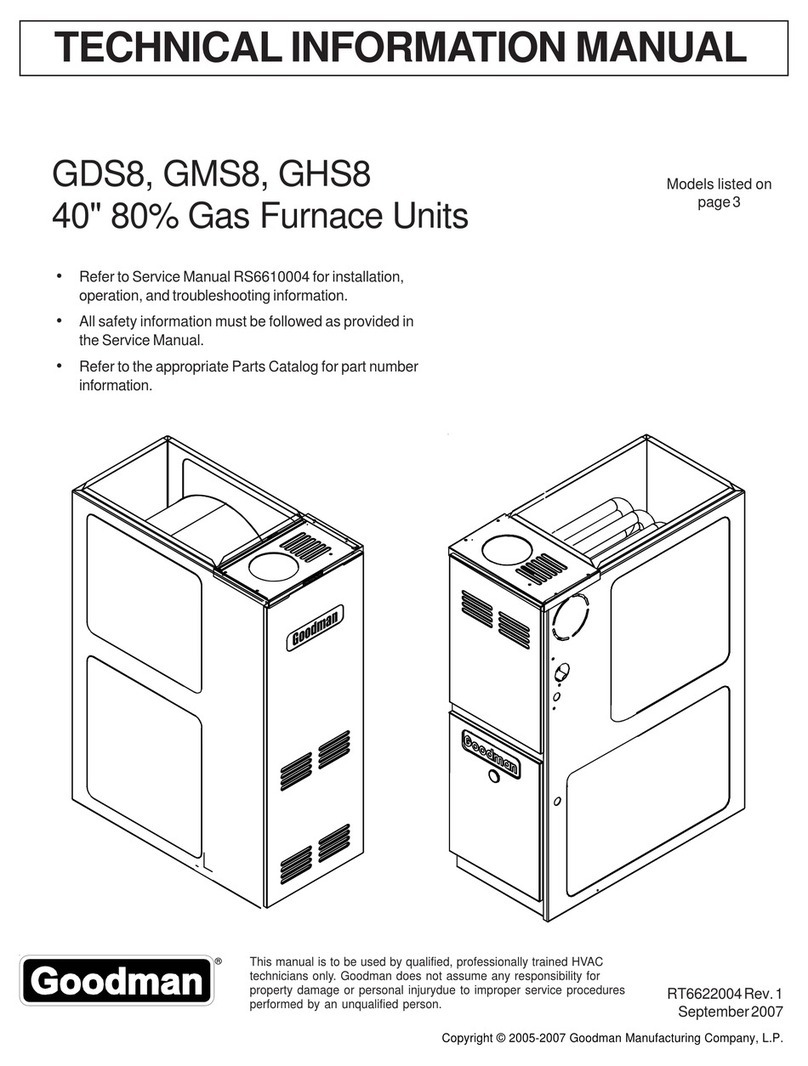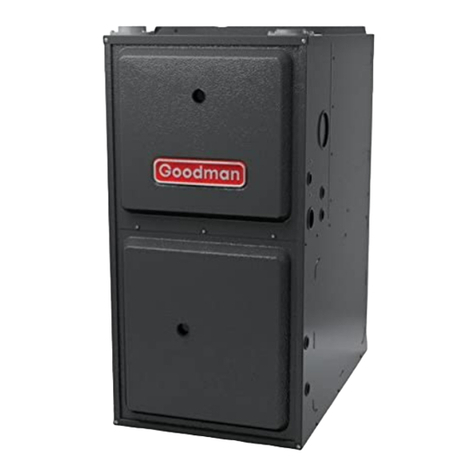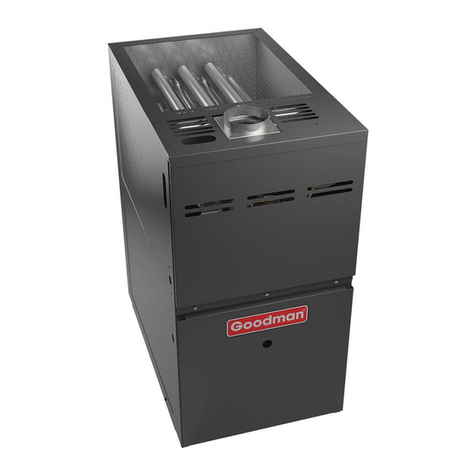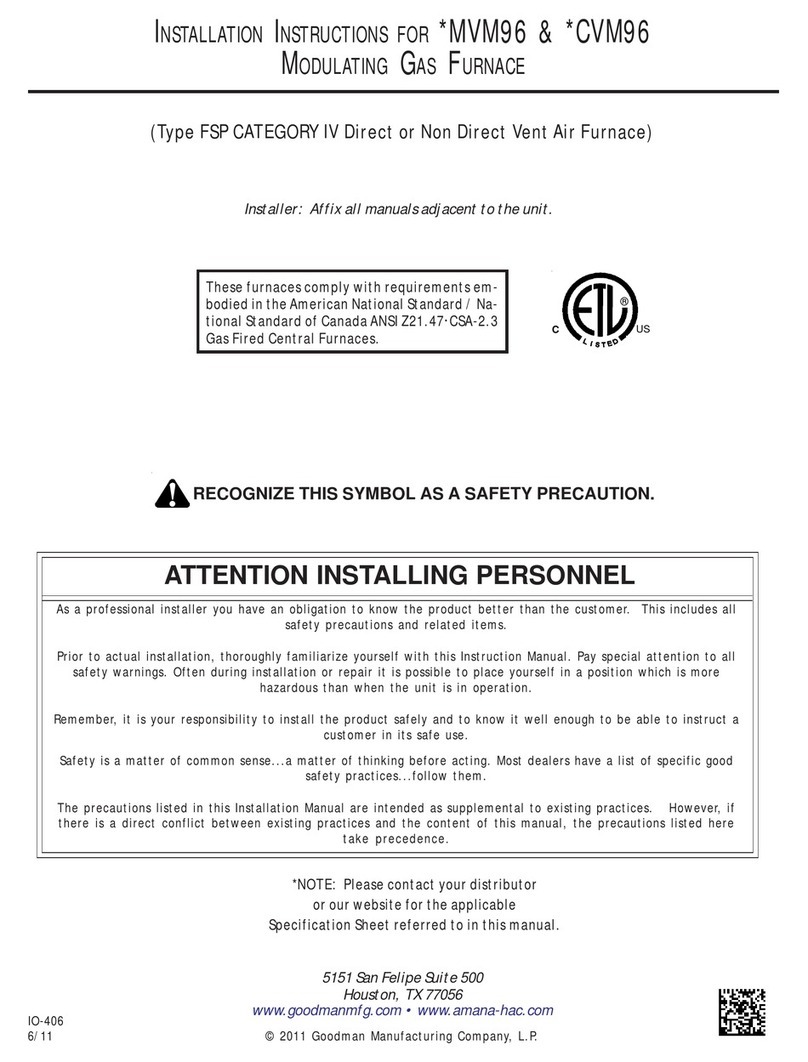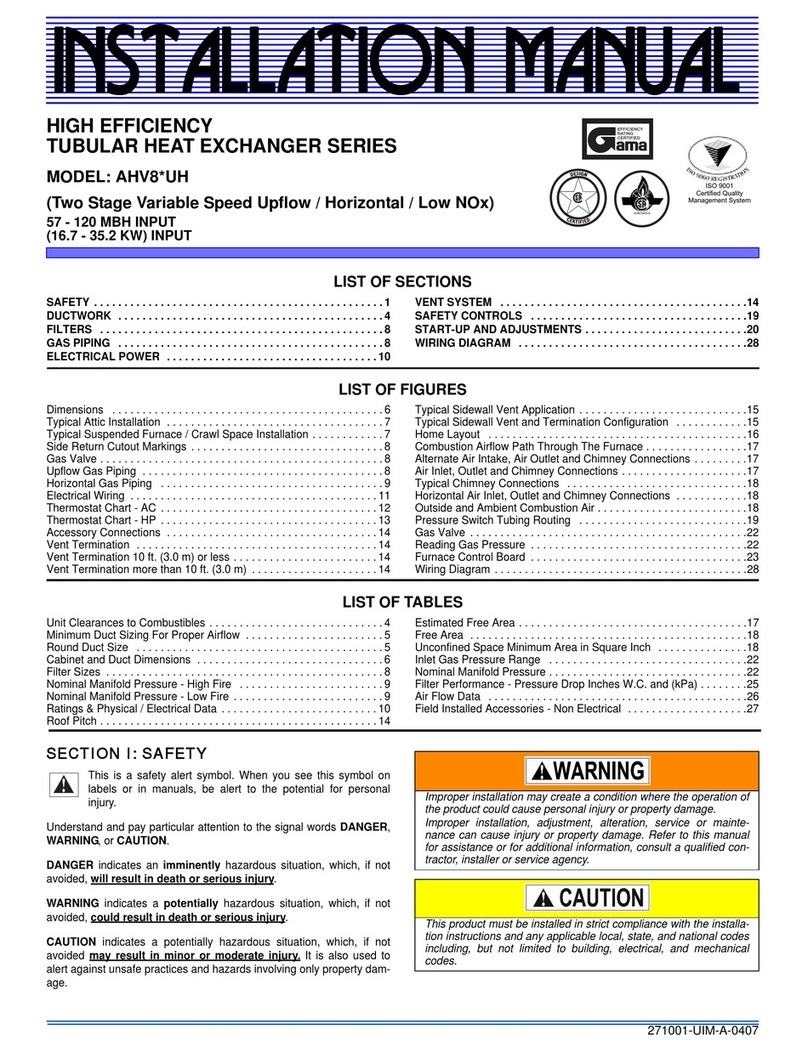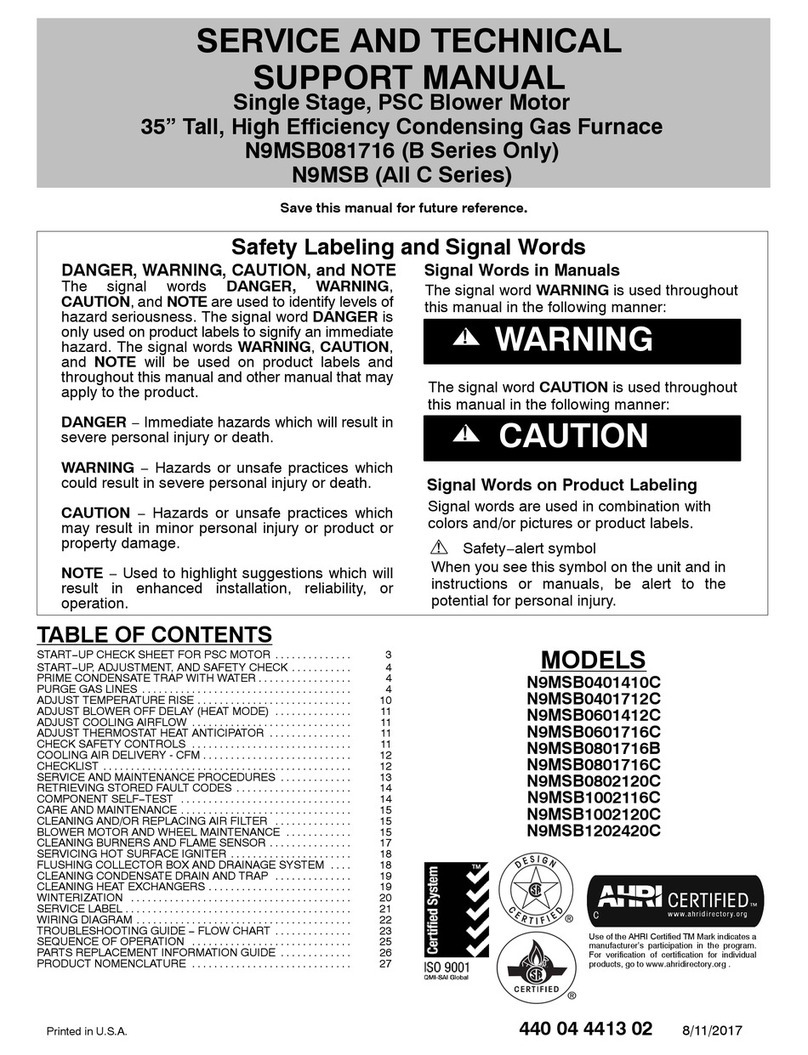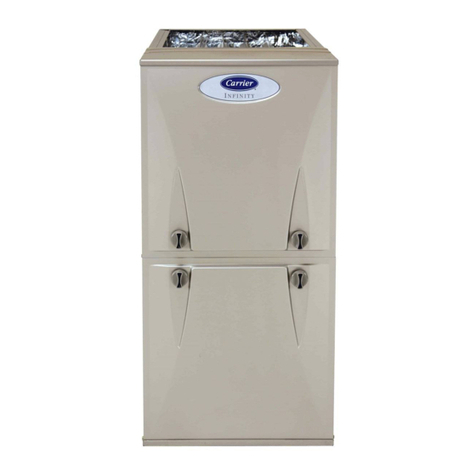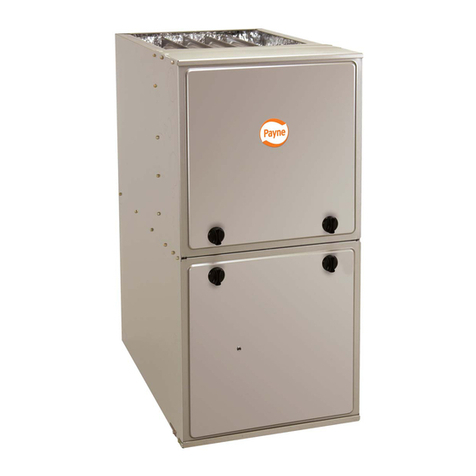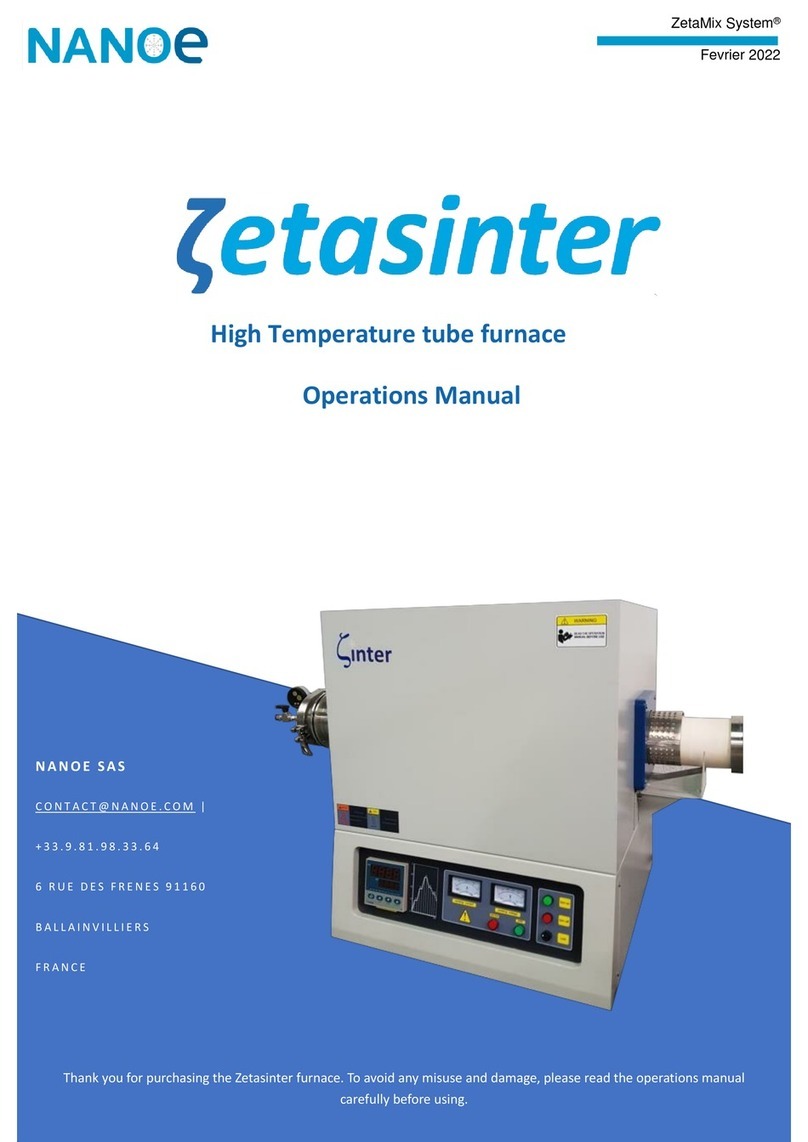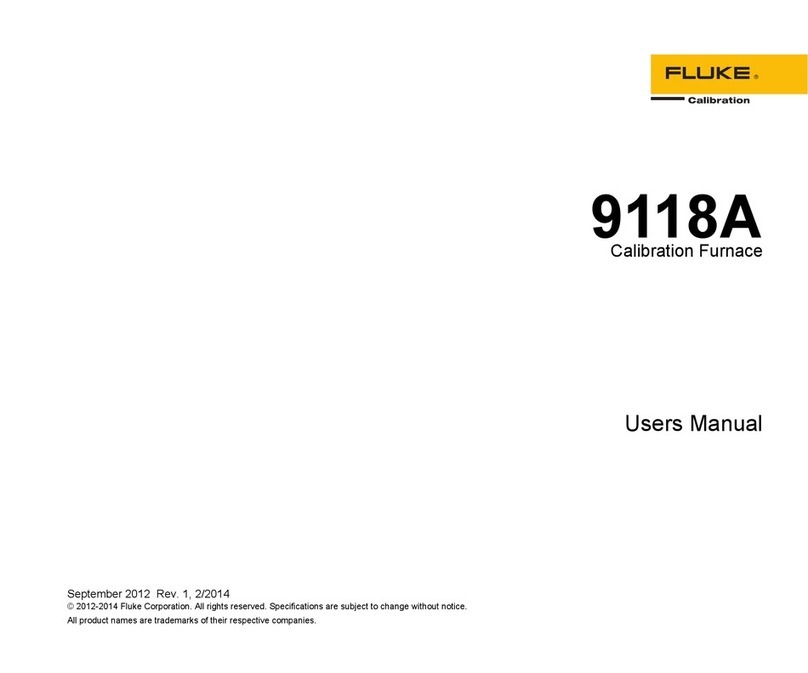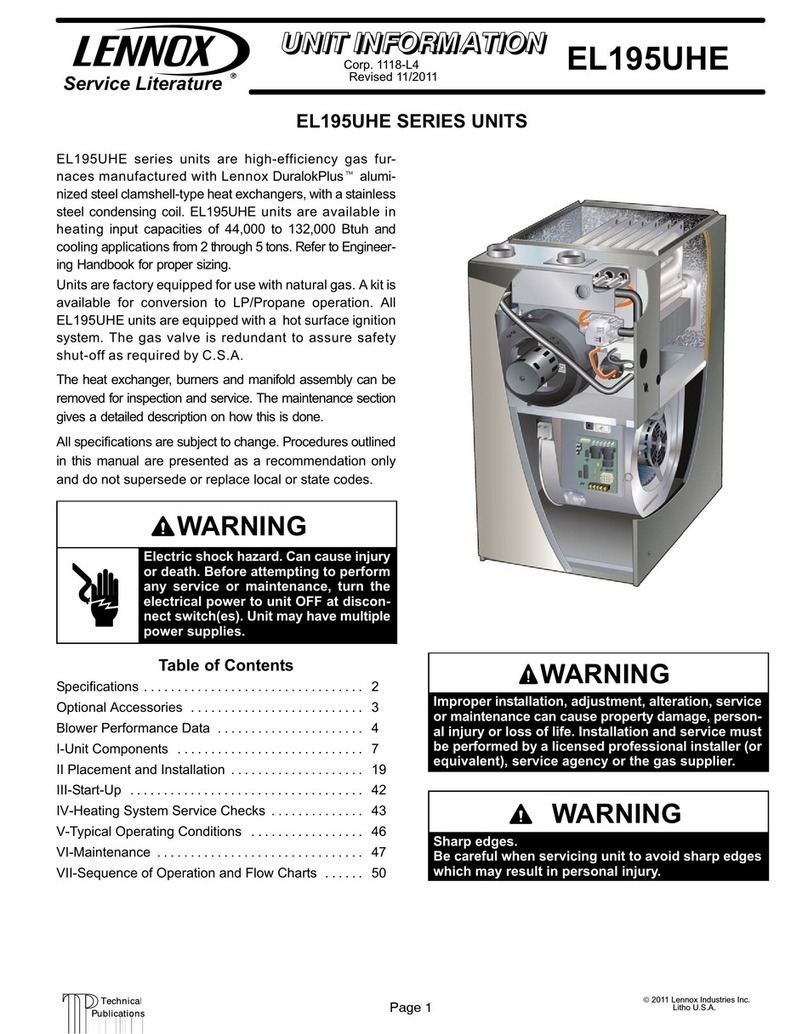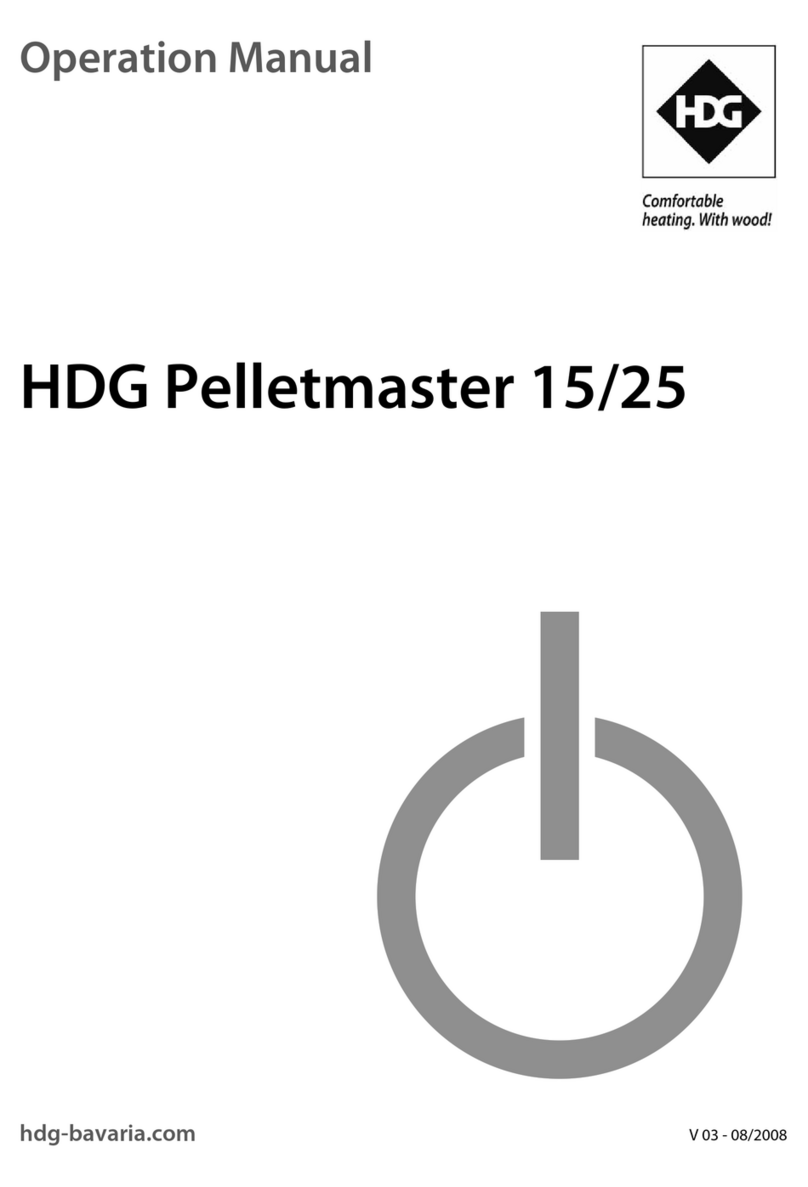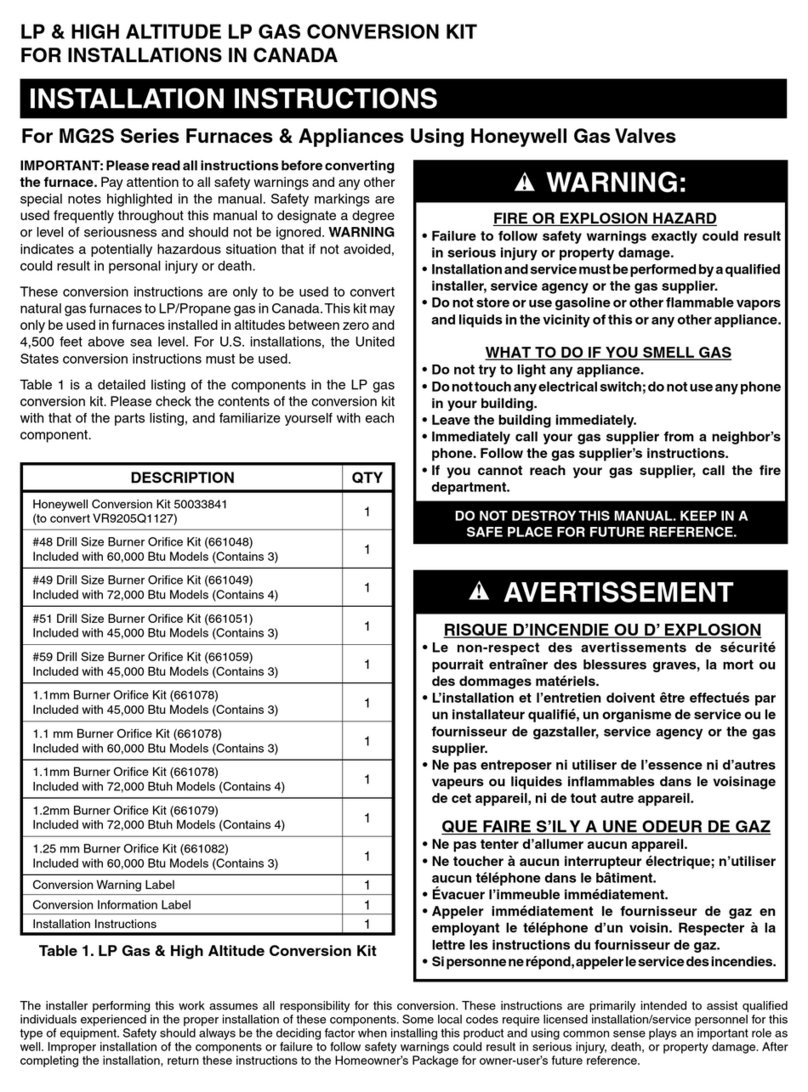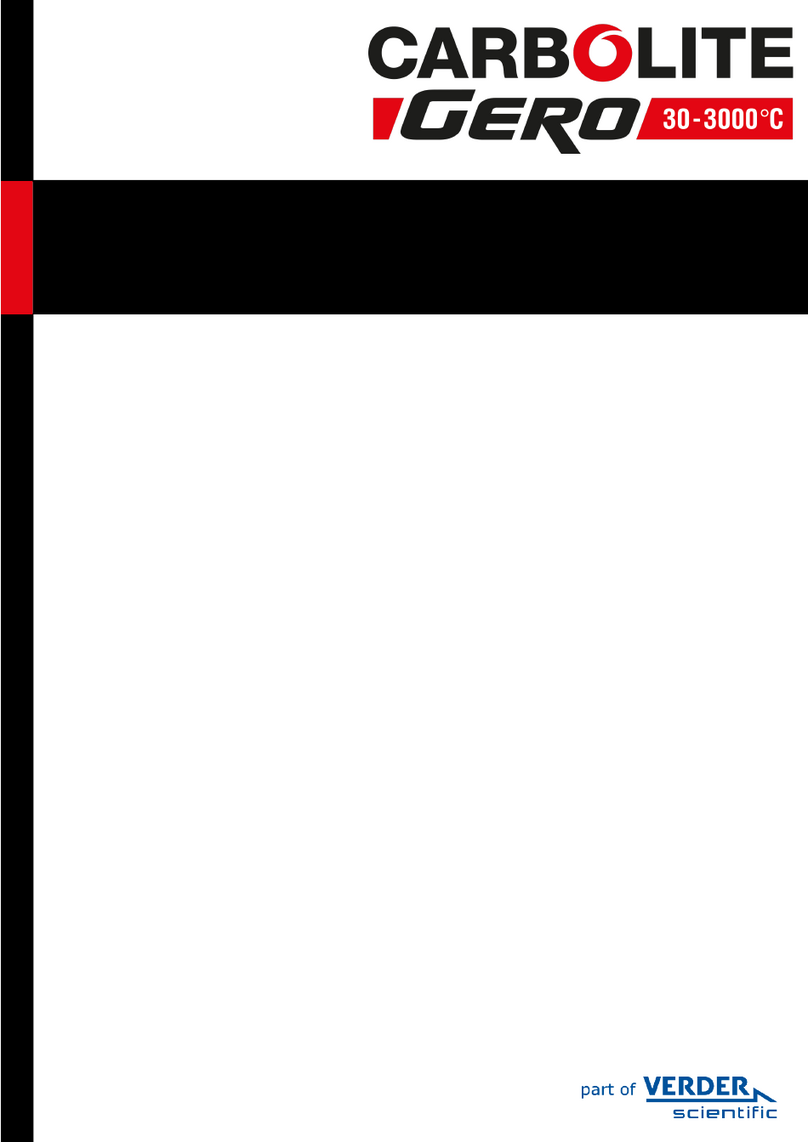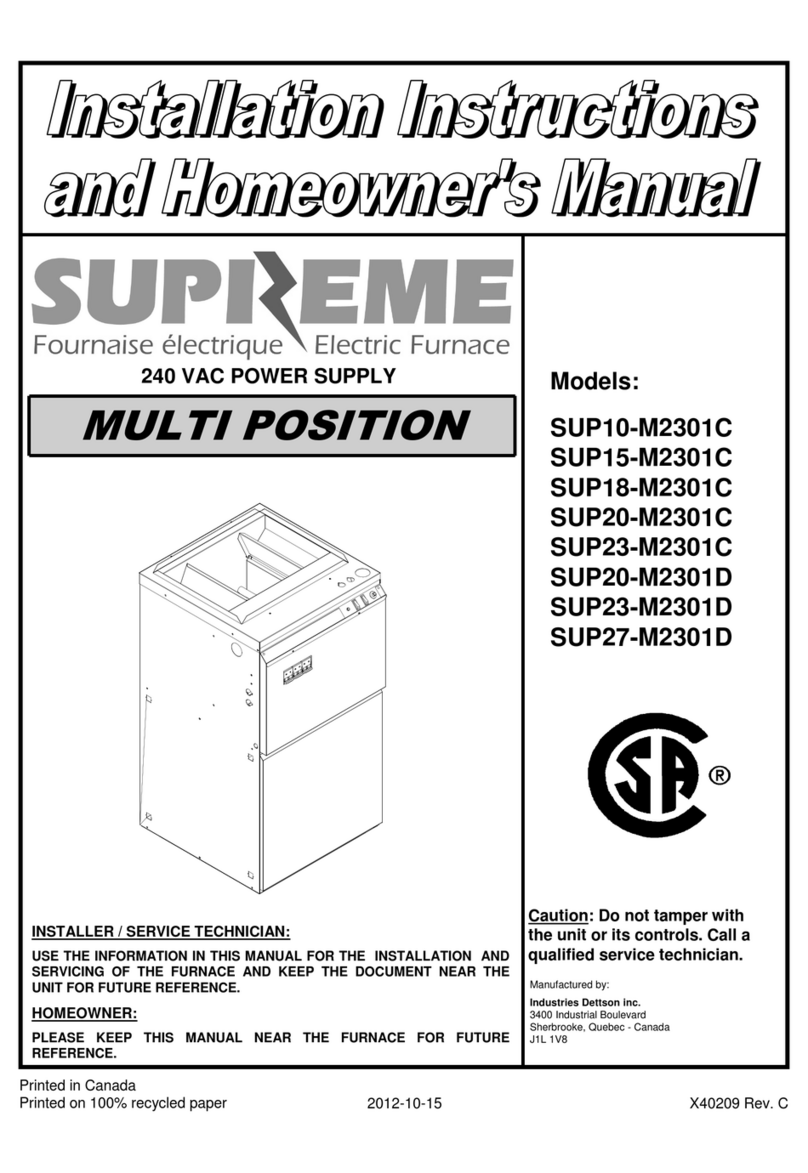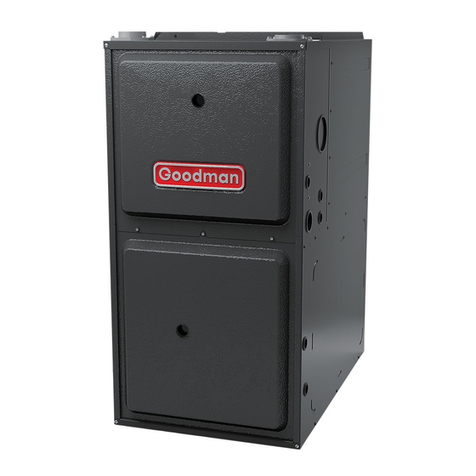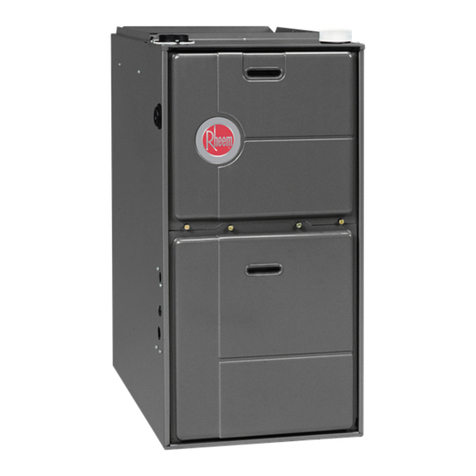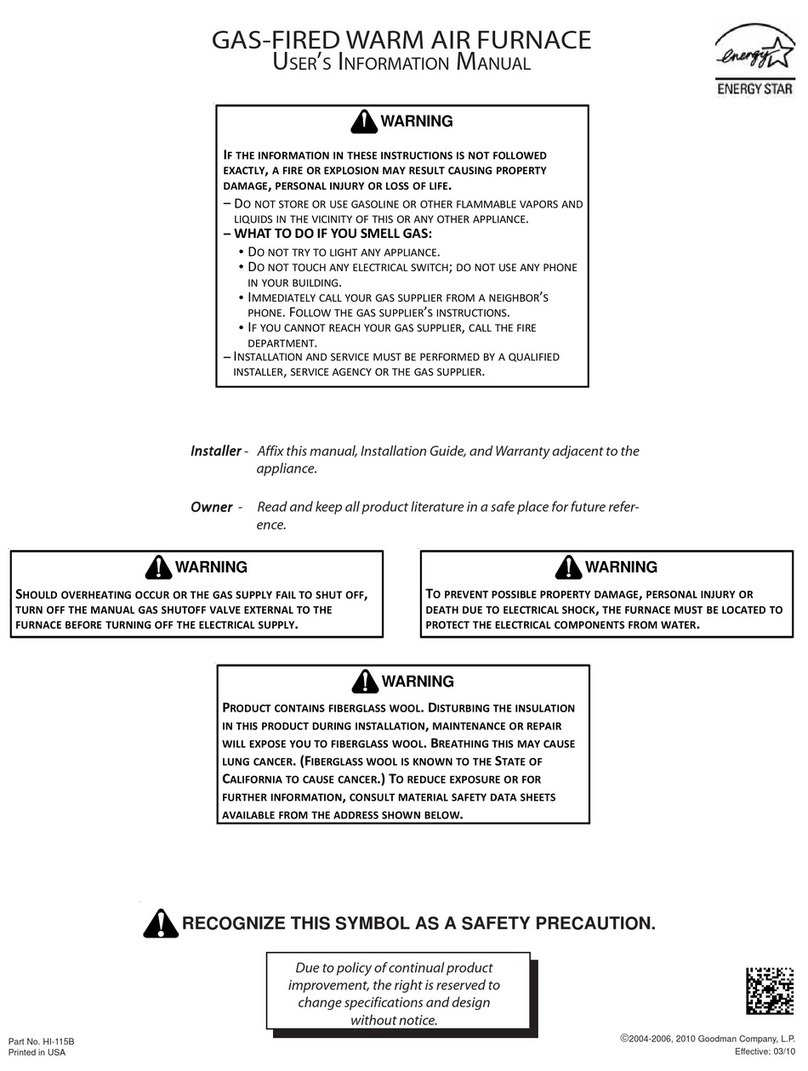
SYSTEM OPERATION
10
The single stage furnace control will energize the
circulator fan speed when the fan switch on the thermostat
is turned to the “ON” position.
R S R
RS
R SKJRR
R R R RS
R JS
Q
SR R
R S
Connect the correct motor leads to the COOL, HEAT, and
PARK terminals. If the heating speed equals cooling speed,
use the jumper wire provided. All unused motor leads that
are not connected to “PARK” terminals on the control must
be taped to prevent shorts.
Duct systems and register sizes must be properly designed
for the C.F.M. and external static pressure rating of the
furnace. Ductwork should be designed in accordance with
the recommended methods of “Air Conditioning Contractors
of America” manual D.
A duct system should be installed in accordance with
Standards of the National Board of Fire Underwriters for
the Installation of Air Conditioning, Warm Air Heating and
Ventilating Systems, Pamphlets No. 90A and 90B.
A return air lter is not supplied with the furnace. The installer
or servicer must supply a means of ltering all of the return
air. Filter(s) shall comply with UL900 or CAN/ULC-S111
Standards.
Upflow / Horizontal
Models
Minimum Recommended Filter Size^
*0403A* 1 - 16 X 25 Side or 1 - 14 X 24 Bottom Return
*0603A* 1 - 16 X 25 Side or 1 - 14 X 24 Bottom Return
*0604B* 1 - 16 X 25 Side or Bottom Return
*0804B* 1 - 16 X 25 Side or Bottom Return
*0805C*
1 - 16 X 25 Side or Bottom Return¹
^ Larger filters may be used, filters may also be centrallylocated
¹ = us e 2 - 16 X 25 fi l ters a nd two si de returns or 20 X 25 fi l te r on bottom
return if furnace is connected to a cooling unit over 4 tons nominal capacity
Upow furnaces with air delivery of less than 1800 CFM:
Use one side return or one bottom return ductwork connection.
Upow furnaces with air delivery of 1800 CFM or higher:
Use two side returns or bottom return or combination of side/
bottom connection.
Guide dimples locate the side and bottom return cutout
locations. Use a straight edge to scribe lines connecting the
dimples. Cut out the opening on these lines. An undersized
opening will cause reduced airflow. For bottom return
connection, remove the bottom of the cabinet before setting
the furnace on the raised platform or return air duct.
A closed return duct system must be used, with the return
duct connected to the furnace. NOTE: Ductwork must never
be attached to the back of the furnace. Supply and return
connections to the furnace may be made with exible joints
to reduce noise transmission, if desired. If a central return is
used, a connecting duct must be installed between the unit
and the utility room wall so the blower will not interfere with
combustion air or draft. The room, closet, or alcove must not
be used as a return air chamber.
When the furnace is used in connection with a cooling unit,
the furnace should be installed in parallel with or on the
upstream side of the cooling unit to avoid condensation in
the heating element. With a parallel ow arrangement, the
dampers or other means used to control the ow of air must
be adequate to prevent chilled air from entering the furnace
and, if manually operated, must be equipped with means to
prevent operation of either unit unless the damper is in the
full heat or cool position.
When the furnace is heating, the temperature of the return
air entering the furnace must be between and .
Depending on the installation and/or customer preference,
diering lter arrangements can be applied. Filters can be
installed in the central return register and a side panel external
lter rack kit (upow lter kit # EFR01). As an alternative
a media air lter or electronic air cleaner can be used as
the requested lter. Refer to the following minimum lter
requirement charts for determination of the minimum lter
area to ensure proper unit performance.
The external lter rack kit is intended to provide a location
external to the furnace casing, for installation of a permanent
lter on upow model furnaces. The rack is designed to mount
over the indoor blower compartment area of either side panel,
and provide lter retention as well as a location for attaching
return air ductwork.
• 120 VAC power applied to furnace.
• Integrated ignition control performs internal checks.
• LED light will ash once at power up and then remain on.
• Integrated ignition control monitors safety circuit
continuously.
• Furnace awaits call from thermostat.
The normal operational sequence in heating mode is as
follows:
• R and W thermostat contacts close, initiating a call for
